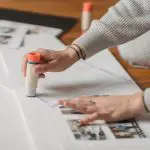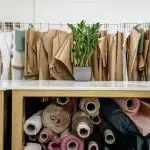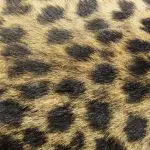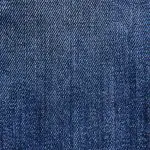So, you've run out of thread and needles for your fabric projects? No worries! Clear Gorilla Glue has got you covered.
Discover 5 innovative ways to use this powerful adhesive on fabrics. From repairing delicate tears to creating durable patchwork, you'll be amazed at the versatility of clear Gorilla Glue.
Whether you're a seasoned crafter or just starting out, these techniques will elevate your fabric game to the next level.
Get ready to unleash your creativity and take your fabric projects to new heights with the help of Clear Gorilla Glue.
Key Takeaways
- Clear Gorilla Glue can effectively mend delicate fabric tears, creating invisible mending.
- It can be used to create durable fabric jewelry and accessories, securing fabric components together.
- Clear Gorilla Glue is ideal for customizing fabric home decor, allowing you to add a unique touch to lampshades, throw pillows, etc.
- It can be used to bond fabric to other materials such as metal, wood, plastic, and glass, by choosing the appropriate adhesive.
Repairing Delicate Fabric Tears
If you have a delicate fabric tear, using a small amount of Clear Gorilla Glue can effectively mend the damage without compromising the fabric's integrity. This technique allows for invisible mending, creating seamless fabric repairs that maintain the original look and feel of the fabric.
Clear Gorilla Glue is designed to create a strong bond without leaving a visible residue, making it an ideal choice for delicate fabric repairs. To begin, ensure the torn edges are clean and free of any dirt or debris. Apply a small amount of Clear Gorilla Glue to one side of the tear, then gently press the edges together. Hold the fabric in place for a few minutes to allow the glue to set.
Once the glue has cured, the tear will be virtually undetectable, and the fabric will regain its strength and flexibility. This method is particularly useful for repairing tears in sheer or lightweight fabrics, as well as for fixing seams and hems.
Crafting Fabric Jewelry and Accessories
Craft fabric jewelry and accessories using Clear Gorilla Glue to create durable and stylish pieces. You can experiment with fabric beadwork, weaving, embroidery, and embellishments to craft unique and eye-catching jewelry and accessories. Clear Gorilla Glue is perfect for securing fabric components together, ensuring that your creations withstand daily wear and tear.
To create fabric beadwork, use Clear Gorilla Glue to attach fabric to wooden or plastic beads. This allows you to customize the beads with your choice of fabric, adding a personal touch to your jewelry. Fabric weaving can also be achieved by gluing fabric strips together to form intricate patterns, which can then be fashioned into bracelets, earrings, or pendants.
Additionally, fabric embroidery and embellishments can be affixed to various fabric bases using Clear Gorilla Glue. This opens up a world of possibilities for adding intricate designs and textures to your fabric jewelry and accessories. Whether you're crafting a statement necklace, a delicate headband, or a charming brooch, Clear Gorilla Glue provides the durability needed for long-lasting, wearable fabric creations.
Customizing Fabric Home Decor
Transform your living space by customizing fabric home decor with Clear Gorilla Glue, creating durable and personalized accents for your home.
Fabric printing is a fantastic way to add a unique touch to your home decor. You can use Clear Gorilla Glue to adhere fabric to lampshades, throw pillows, or even create custom fabric wall art. Choose a design or pattern that complements your existing decor, and use fabric printing techniques to transfer it onto your fabric. Once the fabric is printed, use Clear Gorilla Glue to securely attach it to your chosen decor item.
Fabric embellishment is another way to customize your home decor. Add texture and visual interest to curtains, tablecloths, or napkins by embellishing them with fabric trims, beads, or embroidery. Clear Gorilla Glue provides a strong bond for these embellishments, ensuring they withstand everyday use.
Bonding Fabric to Other Materials
To bond fabric to other materials effectively, consider experimenting with different types of adhesives to achieve a secure and lasting connection. When bonding fabric to metal, wood, plastic, or glass, it's essential to choose the right adhesive for each specific material. Here are some tips for bonding fabric to other materials:
- Fabric and Metal Bonding: Use a specialized fabric adhesive designed to bond fabric to metal surfaces. Ensure that the metal surface is clean and free of any rust or debris before applying the adhesive.
- Fabric and Wood Bonding: Opt for a strong wood glue or a multi-surface adhesive suitable for bonding fabric to wood. Apply the adhesive evenly and press the fabric firmly onto the wood surface to ensure a strong bond.
- Fabric and Plastic Bonding: Look for a plastic-friendly adhesive that's also suitable for fabric. Consider using a solvent-based adhesive for a secure bond between fabric and plastic materials.
- Fabric and Glass Bonding: Choose a clear, waterproof adhesive specifically formulated for bonding fabric to glass. Clean the glass surface thoroughly and apply the adhesive evenly to create a durable bond.
Experimenting with different adhesives for fabric and various materials will help you achieve the best results when bonding fabric to other materials.
Creating Durable Fabric Patchwork
When it comes to fabric reinforcement and quilt restoration, Clear Gorilla Glue offers a durable solution for creating long-lasting fabric patchwork. To begin, carefully align the fabric pieces, ensuring they fit seamlessly together. Apply a small amount of Clear Gorilla Glue to the edges of the fabric patchwork, holding the pieces firmly in place for 60 seconds to allow the adhesive to set.
The clear-drying nature of the glue ensures that no unsightly residue is left behind, preserving the aesthetic appeal of the fabric. Once the patchwork is bonded, the fabric becomes more resilient and able to withstand regular use and washing without compromising its integrity. This method is particularly useful for repairing worn-out areas of quilts or reinforcing seams and edges that are prone to fraying.
Frequently Asked Questions
Can Clear Gorilla Glue Be Used to Attach Fabric to Leather or Suede Materials When Bonding Fabric to Other Materials?
Yes, clear Gorilla Glue can be used to attach fabric to leather or suede materials when bonding fabric to other materials. It's essential to follow proper leather repair and adhesion techniques for successful suede bonding and fabric applications.
Is Clear Gorilla Glue Safe to Use on Delicate and Sheer Fabrics Such as Chiffon or Organza When Repairing Delicate Fabric Tears?
Yes, clear Gorilla Glue is safe for delicate and sheer fabrics like chiffon or organza. When repairing tears, use bonding techniques that are gentle on these materials. It's important to test a small area first for fabric safety.
Can Clear Gorilla Glue Be Used to Create Waterproof Fabric Patchwork for Outdoor or Marine Applications?
Yes, clear Gorilla Glue can create waterproof fabric patchwork for outdoor or marine applications. It's perfect for outdoor gear and marine repairs. It's also great for fabric art and mixed media crafting.
What Is the Best Method for Removing Clear Gorilla Glue From Fabric in Case of an Accidental Spill or Mistake During Crafting?
To remove clear Gorilla Glue from fabric, the best method is to carefully scrape off excess glue, then apply acetone or nail polish remover. Blot with a clean cloth and repeat as needed. Prevent future spills by working in a well-ventilated area and using protective coverings.
Are There Any Special Considerations or Techniques for Using Clear Gorilla Glue on Heat-Sensitive Fabrics Such as Polyester or Nylon When Customizing Fabric Home Decor?
When customizing fabric home decor with heat-sensitive fabrics like polyester or nylon, be cautious. Clear Gorilla Glue can be used, but avoid high heat when bonding. Test a small area first to ensure the fabric's integrity.
- How Does Ring Spun Cotton Affect Garment Fit and Shape Retention? - August 13, 2024
- What Are the Challenges in Producing Ring Spun Cotton? - August 13, 2024
- Is Ring Spun Cotton Suitable for Plus-Size Clothing? - August 13, 2024







